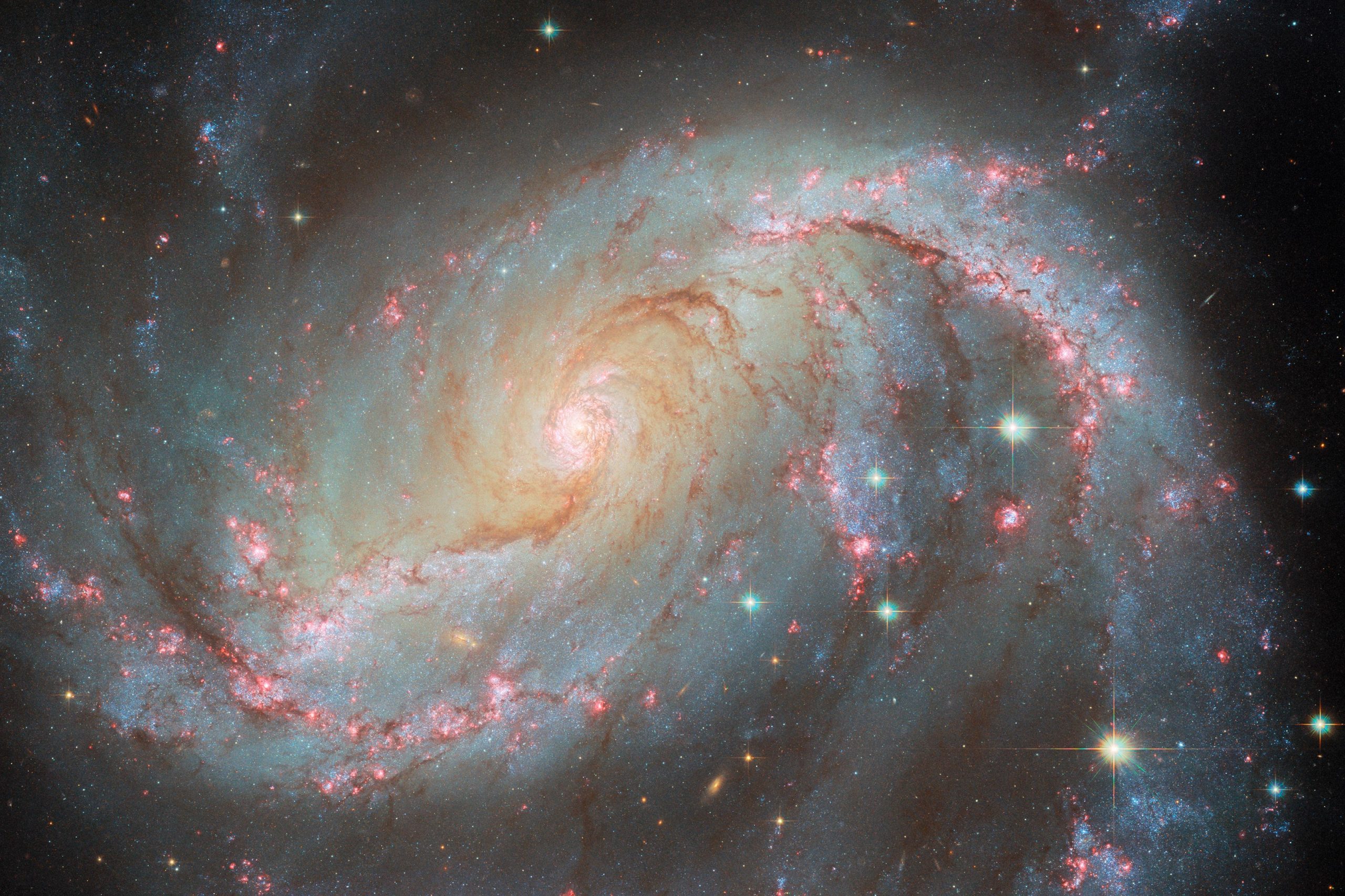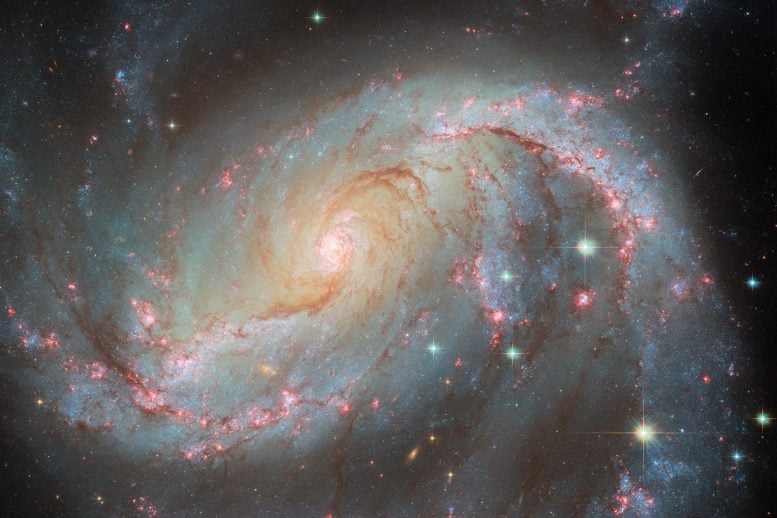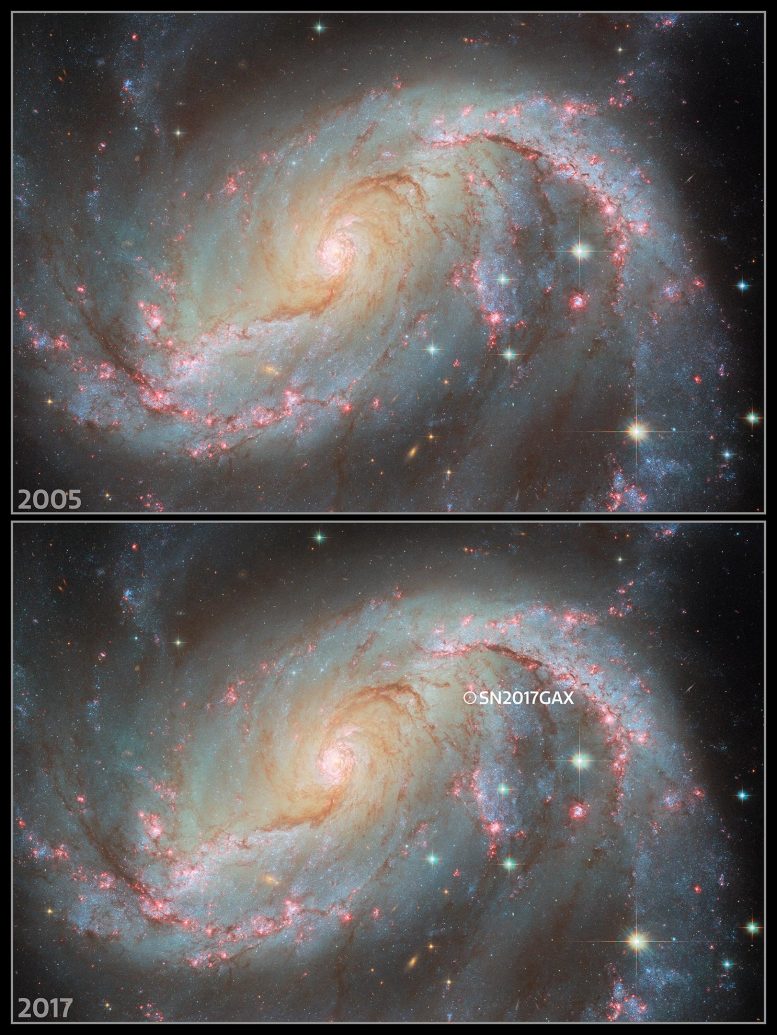

NGC 1672, a stunning barred spiral galaxy located 49 million light-years away in the constellation Dorado, puts on a dazzling light show, courtesy of Hubble’s detailed imaging.
This mesmerizing Hubble Space Telescope image features NGC 1672, a barred spiral galaxy located 49 million light-years away in the constellation Dorado. NGC 1672 puts on a dazzling celestial light show, showcasing various types of cosmic lights. Like other spiral galaxies, its disk is filled with billions of stars that create a stunning glow. Along its two prominent spiral arms, clouds of hydrogen gas emit a vivid red glow, energized by the intense radiation of young, forming stars.
Closer to the galaxy’s center are some particularly striking, newly-formed stars. Extremely hot, they sit within a ring of hot gas and emit powerful X-rays. At the very core lies the brightest X-ray source of all: an active galactic nucleus formed by the heated material spiraling into NGC 1672’s supermassive black hole, classifying NGC 1672 as a Seyfert galaxy.

But a highlight of this image is the most fleeting and temporary of these lights: supernova SN 2017GAX, visible in just one of the six Hubble images that make up this composite image. This was a Type I supernova caused by the core collapse and subsequent explosion of a giant star, going from invisibility to a new light in the sky in just a matter of days.
In that image from later that year, the supernova is already fading, and so is only just visible here as a small green dot, just below the crook of the spiral arm on the right side. In fact, this was on purpose, as astronomers wanted to look for any companion star that the supernova progenitor may have had — something impossible to spot beside a live supernova! For a closer look at the supernova’s appearance, you can compare the two images with this slider tool.
Recently, NGC 1672 was also among a crop of galaxies imaged with the James Webb Space Telescope (JWST), showing the ring of gas and the structure of dust in its spiral arms.